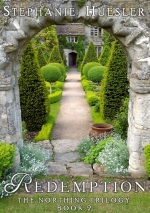Throughout history, men and women have sometimes found it expedient to take on the guise of the opposite sex. For men, it was often a tool to avoid military duties or to escape punishment of some kind; for women, the reasons were often due to the fact that men’s lives were easier – they had access to higher education, could rule, could lead, could travel more safely than a lone woman, and had far more freedom in society; another frequent reason was to avoid being forced into a loveless marriage. There are many, many documented histories of cross-dressers; I will therefore focus my selection on a few of those cases where expediency was the factor, and not a question of sexual preference. Some were androgynous, while others were unattractive or neutral enough in features to pass as either gender. To read each history, click on the links:
Deborah Sampson Gannett (December 17, 1760 – April 29, 1827): Served in the Continental Army during the American Revolutionary War as Timothy Thayer.
Hannah Snell (1723-1792): Served as a Royal army foot soldier, and a marine. She is one of the few cases who became famous within their own lifetime; she revealed her true identity in 1750, and used her tales of adventure to pecuniary advantage.
Catalina de Erauso (late 15oos): She held many positions, some under the very noses of relatives searching for the missing woman.
Chevalier d’Éon (5 October 1728 – 21 May 1810): French diplomat, spy, freemason and

Chevalier d’Eon
soldier who fought in the Seven Years’ War.
Frances Clayton (1830s): Female Soldier in the Civil War.
Billy Tipton (December 29, 1914 – January 21, 1989): Jazz musician.
Ulrika Eleonora Stålhammar (1683-1733): A Swedish Corporal under the name of Vilhelm Edstedt.
Shi Pei Pu (1938-2009): A Chinese opera singer and spy.
Margaret Ann Bulkley (ca. 1789-1865): An Irish military surgeon in the British Army, as James Barry.
Marina the Ascetic, Monk (Fifth Century): She chose exile from her monastery and to raise the illegitimate child of a woman who wrongly accused “him” of raping her, rather than reveal her true gender. Only after her death was the truth discovered.
Isabelle Eberhardt (1877 – 1904): Explorer in the Arabian region, under the assumed name of Si Mahmoud Essadi. Also, spy during the Algerian revolt against France. She died in a flash flood at the age of 27.
Anne Bonney and Mary Read (18th century): Ruthless pirates, they started off as cross-dressers, but once their reputations were established they dropped the male guise.







